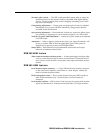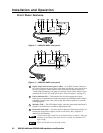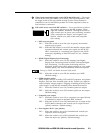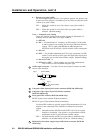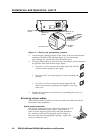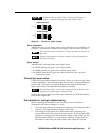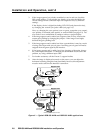
1-3RGB 500 AKM and RGB 560 AKM Introduction
Serration pulse switch — This DIP switch-selectable feature adds or strips the
serration pulses from the signal to make it compatible with digital display
devices. Use the serration pulse switch if flagging or bending occurs at the
top of the video display.
Gain/peaking adjustment — Output gain and peaking levels may be adjusted
individually for red, green, and blue channels by using jumpers that are
accessible inside the enclosure.
Sync polarity adjustment — Horizontal and vertical sync output can follow input
sync polarity, or outgoing sync can be forced to negative, via a DIP switch.
Vertical sync pulse width adjustment — Vertical sync pulse width can be adjusted
via a DIP switch.
Autopower — When a signal is present at the video/sync input, the interface will
power on, and the LED on the front panel lights green. When power is
applied but no signal is present, the LED lights amber.
Stereo audio — Both interfaces accept unbalanced stereo audio and output
balanced or unbalanced stereo audio.
RGB 500 AKM feature
Video input termination selection switch — A front panel toggle switch provides
a way to switch between high Z (when a local monitor is connected) and 75
ohm (when no local monitor is connected) video input termination on these
models.
RGB 560 AKM features
Local monitor output connector — A 15-pin HD female local monitor connector
on the front panel simplifies connections to a local display without the
need for monitor breakout cables.
ID bit termination switch — These models feature front panel DIP switches to
make ID bit termination easy. Use this feature if no local monitor is
connected.
Local monitor switches — DIP switches 7 and 8 are used for routing local monitor
signals for Macintosh 13” monitors and all other Mac/VGA-type monitors.









